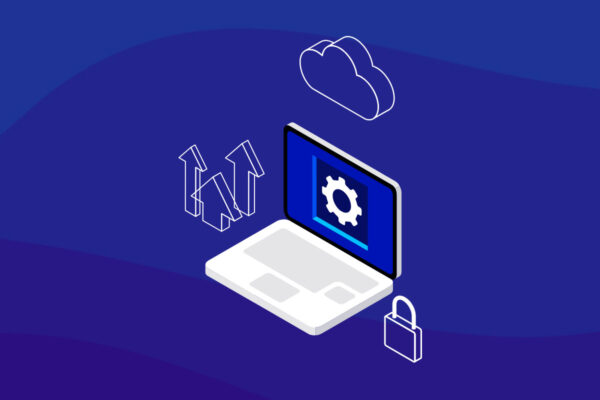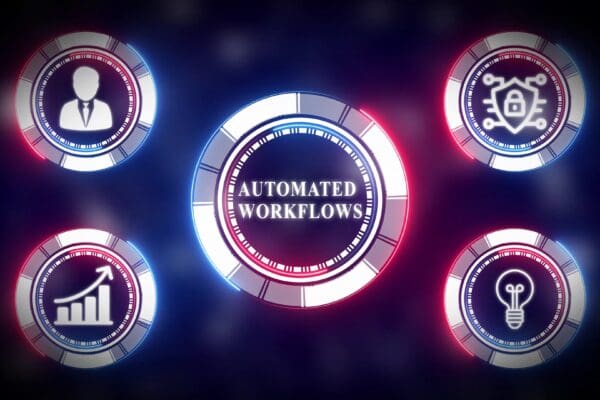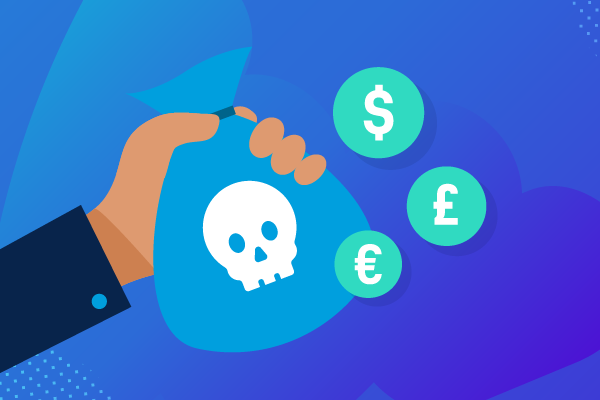How to sell BCDR: A guide for MSPs
Small and midsize businesses (SMBs) are becoming prime targets for cybercriminals. With fewer defenses, limited in-house IT expertise and outdated backup strategies, SMBs are seen as easy entry points for ransomware and other attacks. This vulnerability creates a critical opportunity for MSPs to step in with modern business continuity and disaster recovery (BCDR) solutions. BCDR helps MSPs protect their clients’ most valuable asset — their data — while enabling uninterrupted business operations. Yet, despite its importance, many MSPs still view BCDR as a cost center instead of a service that can drive long-term growth and increase recurring revenue.
According to the State of BCDR Report 2025, nearly half of organizations are planning to replace their primary backup provider within the next year, citing inadequate disaster recovery capabilities as a key concern. So, why is selling BCDR still such a struggle for MSPs? The problem isn’t the technology; it’s in the positioning. Many MSPs struggle to communicate the value of BCDR beyond basic backup, especially to business owners who haven’t yet experienced downtime or data loss firsthand. For cost-conscious clients, spending more on BCDR than they did on traditional backup can seem unnecessary until it’s too late.
This article equips MSPs with the insights, tactics and language needed to effectively sell BCDR — not as a backup tool, but as a business-critical continuity solution. We’ll break down common objections, explore what SMB clients actually care about and show how MSPs can turn BCDR into a recurring revenue driver while strengthening client trust.
Why MSPs struggle to sell BCDR
For many MSPs, selling BCDR isn’t a technical challenge, but rather a communication challenge. MSP clients often don’t understand what BCDR actually is or why it costs more than traditional backup solutions. They hear “backup” and assume their needs are already met.
This confusion stems from a common misconception that backup and business continuity are interchangeable. While a backup might eventually recover data, only BCDR ensures that business operations continue running with minimal interruption. That distinction often gets lost in client conversations, especially when cost is a top priority.
Business owners, particularly in the SMB space, tend to evaluate technology investments based on past experiences. If they haven’t suffered data loss, downtime or a cyberattack recently, they may not see the urgency of preparing for one. Many fall into a false sense of security, relying on outdated systems or basic cloud storage, unaware that these tools offer limited recovery options in the event of a real crisis.
There’s also the challenge of demonstrating return on investment (ROI). Downtime is hypothetical — until it’s not. Without a recent incident or quantifiable loss, it’s difficult to create urgency or justify BCDR as a business-critical expense.
As a result, MSPs often find themselves stuck between rising threats and clients who don’t feel at risk. Bridging this gap means helping prospects see the business impact of downtime, not just the technical features of recovery. It requires shifting the conversation toward outcomes, such as operational continuity, data integrity and customer trust, and framing BCDR as the foundation of long-term cyber resilience.
Key strategies for selling BCDR
To sell BCDR effectively, MSPs must shift the narrative. It’s not about selling storage — it’s about selling uptime, resilience and operational continuity. This section outlines practical strategies to move the conversation from technical specifications to business-critical outcomes.
Emphasize continuity over backup
Many clients believe that having their data backed up — especially in the cloud — is enough to protect their business. However, while they store a copy of data, backups don’t guarantee full protection or continuity.
If a backup can’t be restored quickly or completely after a disruption, its value becomes questionable. So, what happens if a backup is corrupt? What if a cyberattack, such as ransomware, encrypts both the production environment and the backup? These are all real-world scenarios that MSPs need to bring into the conversation.
Backup stores a copy of the data, but it’s BCDR that ensures comprehensive protection and quick recovery when it matters most. BCDR goes beyond storage to enable the rapid recovery of operations, allowing businesses to continue serving their customers, meet compliance requirements and minimize data and revenue loss. That’s the core message MSPs need to communicate.
To shift the client’s mindset, ask questions that expose the gaps in legacy backup thinking:
- Can you ignore a scenario where your backups are also encrypted by ransomware?
- Are you willing to accept a three-day infrastructure rebuild just to restore from legacy backups?
- Are you comfortable with a recovery that could take weeks, risking data loss due to untested systems?
- Can you prove to auditors and cyber insurers that you can restore operations within the documented windows?
If the answer is “no” to any of these, then backup alone isn’t enough. Clients need a BCDR solution built to protect data, enable fast recovery and keep business moving.
Calculate the cost of downtime
To sell BCDR with impact, MSPs must shift the conversation from technical specs to financial consequences. Business leaders respond to numbers, and if they can see the cost of downtime in clear terms, the value of BCDR becomes hard to ignore.
Downtime doesn’t just halt operations, but also causes immediate losses in revenue and productivity. Sales are delayed, service delivery is interrupted, and internal teams sit idle. In many cases, even a brief outage can result in thousands of dollars in costs.
There are also intangible costs to consider. Reputational damage, lost customer trust and missed contractual obligations can have long-term consequences. Recovery itself is expensive, especially when environments need to be rebuilt from scratch.

Help clients think through these questions:
- How many employees would be unable to work during an outage?
- What is their hourly rate?
- How many sales or service requests would be lost?
- What would it cost to recover from a failed restore attempt?
To make the impact more real, use tools like the Recovery time & downtime cost calculator. When you plug in a client’s actual figures, the potential losses come into sharp focus. Once clients understand that an hour of downtime could cost $10,000 or more, BCDR moves from being a ‘nice-to-have’ to a critical business investment.
Connect RTO & RPO to business outcomes
To many clients, RTO and RPO sound like technical jargon. MSPs need to simplify these terms and tie them to real business impact.
- Recovery time objective (RTO) is the maximum amount of time a business can be down before operations must be restored.
- Recovery point objective (RPO) is the maximum amount of data a business can afford to lose, measured in time from the last backup to the point of disruption.
In simple terms:
RTO = How long it takes to get back up.
RPO = How much work or data can be lost.
Help clients understand that these measures are business impact indicators within the context of their operations.
Ask:
- How long can your business afford to be offline before customers walk away?
- How many hours of lost data would your team have to recreate?
- What happens to your reputation if you miss service level agreements or deadlines?
Connect RTO and RPO to things that matter — lost productivity, delayed revenue, customer frustration and compliance risk. For example, a three-hour RTO might sound reasonable until you show what that three-hour outage actually costs in lost transactions or idle employee time.
MSPs should also offer tiered recovery options. Not every workload needs a five-minute recovery window, but critical systems likely do. Position BCDR as a way to align recovery times with the actual risk and business priority of each system. When clients see RTO and RPO as tools to protect revenue and maintain trust, they become part of a strategic conversation — not a technical one.
Focus on brand reputation and customer trust
Downtime does more than disrupt operations — it damages trust. Think about a law firm that can’t access case files or an e-commerce site that crashes during a holiday sale. These are business failures that affect customer confidence and brand perception.
BCDR protects more than data. It protects a company’s reputation. MSPs should position it as a way to ensure businesses stay responsive, compliant and credible even during a crisis.
Ask questions that make the risk real:
- What would clients think if your systems went down mid-service?
- Could a competitor win business while you recover?
- How long would it take to rebuild lost trust?
Clients who see BCDR as a trust-building tool are more likely to invest. It’s not just about recovery; it’s also about protecting the business’s image.
Qualify and target the right clients
Not every client will be ready for BCDR — and that’s okay. The most successful MSPs focus on the right-fit prospects. Those are businesses that understand risk, value uptime and operate in industries where disruption isn’t an option.
Look for clients in sectors that rely on operational continuity and are often bound by strict compliance standards, such as healthcare, finance, legal and retail. Such businesses have more to lose from downtime and are more likely to see the value in investing. Also, watch for signs in mindset. It’s easier to sell BCDR to clients who already see IT as a business enabler, not just a cost.
Rather than chasing every lead, invest time in educating the right ones. Use assessments or risk audits to show where their vulnerabilities lie. Once they understand the gap, BCDR sells itself.
The goal isn’t to convince everyone — it’s to convert those who already see the need.
Common objections and how to overcome them
Objections are a natural part of the sales process. The key is to address them with empathy, clarity and real-world context. Use this section as a quick-reference guide during BCDR sales conversations. Each objection is paired with messaging that reframes the conversation around business value — not just technical details.
Objection: “We already have backups.”
Clients often think backups are enough. The reality is, backups only store data. They don’t ensure quick recovery or operational continuity.
Reframe the conversation:
“Yes, but how long will it take to restore that data? Can your business afford to be down for hours or even days?”
Help them see the difference between having a copy of data and actually being able to use it. Talk about recovery time, not just backup frequency. If it takes three days to rebuild infrastructure and restore files, that’s not continuity — that’s disruption.
Objection: “We’ve never had downtime before.”
Many businesses underestimate risk because they haven’t been hit yet. But past luck is not a security strategy.
Reframe the conversation:
“Just like you don’t buy insurance after an accident, the best time to invest in continuity is before a problem occurs.”
Cyberthreats, such as ransomware, are becoming more frequent, sophisticated and increasingly difficult to recover from. Also, downtime isn’t always caused by cyberattacks. Accidental file deletions, hardware failure and even routine system updates can bring operations to a halt. Whether the cause is malicious or mundane, the impact is the same. Demonstrate that the risk is real, whether they’ve experienced it or not.
Objection: “We can’t afford it right now.”
While cost is one of the most common objections, it is also often the least justified.
Reframe the conversation:
“BCDR isn’t a cost; rather, a protection against a much bigger one. One hour of downtime can cost more than a full year of BCDR coverage.”
Show clients the numbers. Downtime costs include lost productivity, missed revenue, recovery expenses and reputational damage. Position BCDR as business insurance that pays off the moment something goes wrong.
If needed, offer flexible pricing or a phased rollout to get started.
Objection: “We can manage without our data for a bit.”
Many clients believe they can “get by” during downtime. That’s rarely true once they walk through the actual impact.
Reframe the conversation:
“Even short outages can ripple through your business. Missed deadlines, delayed responses and idle employees all cost more than you think.”
Encourage clients to think beyond files. What happens to invoicing? Order fulfillment? Customer support? BCDR not only protects data but also ensures the business continues to run without interruption.
Objection: “We’re not a target for ransomware.”
Small businesses are among the most common targets of ransomware, not the least.
Reframe the conversation:
“Hackers don’t care how big you are. They care how vulnerable you are.”
Cybercriminals view smaller businesses as low-risk, high-reward targets due to their weaker defenses. Even if prevention fails, BCDR provides clients with a way to recover quickly and minimize the damage.
Real stories from similar-sized businesses reinforce this point even more strongly than statistics alone.
In summary: Sell through education, not pitches
Successful BCDR sales come from education, not pressure. Clients need to understand the risks before they act. When they do, they often sell themselves on the solution.
Use simple language, real-world examples and clear ROI to make the case. Focus on their business, not the technology. Ask about their goals, concerns and what downtime would actually mean to them. Then, position BCDR as more than a safety net. It’s a way to protect revenue, build trust and stay competitive. When clients see it that way, cost becomes easier to justify.
Win more sales with Datto BCDR
Every strategy in this guide becomes more impactful when paired with the right solution. Datto BCDR gives MSPs a purpose-built platform to deliver true business continuity.
With instant virtualization, MSPs can recover client systems in minutes, either on robust on-site appliances or in the immutable Datto Cloud. Datto’s solution also includes automated backup verification, flexible restore options and a unified dashboard for managing backup and disaster recovery across multiple client locations. It’s designed to help MSPs deliver always-on availability and meet even the most demanding SLAs with confidence.
To help close BCDR deals faster, Datto also offers the Backup Concierge Program. MSPs get direct access to a dedicated backup solution architect who helps align each client’s workloads with the right protection strategies and recovery objectives. From pre-sales support and client demos to co-branded marketing materials, this program is built to accelerate your sales process and support consistent recovery outcomes.
Explore how Datto can help you protect your clients, grow your recurring revenue and boost your profitability. Become a Datto Partner today.




